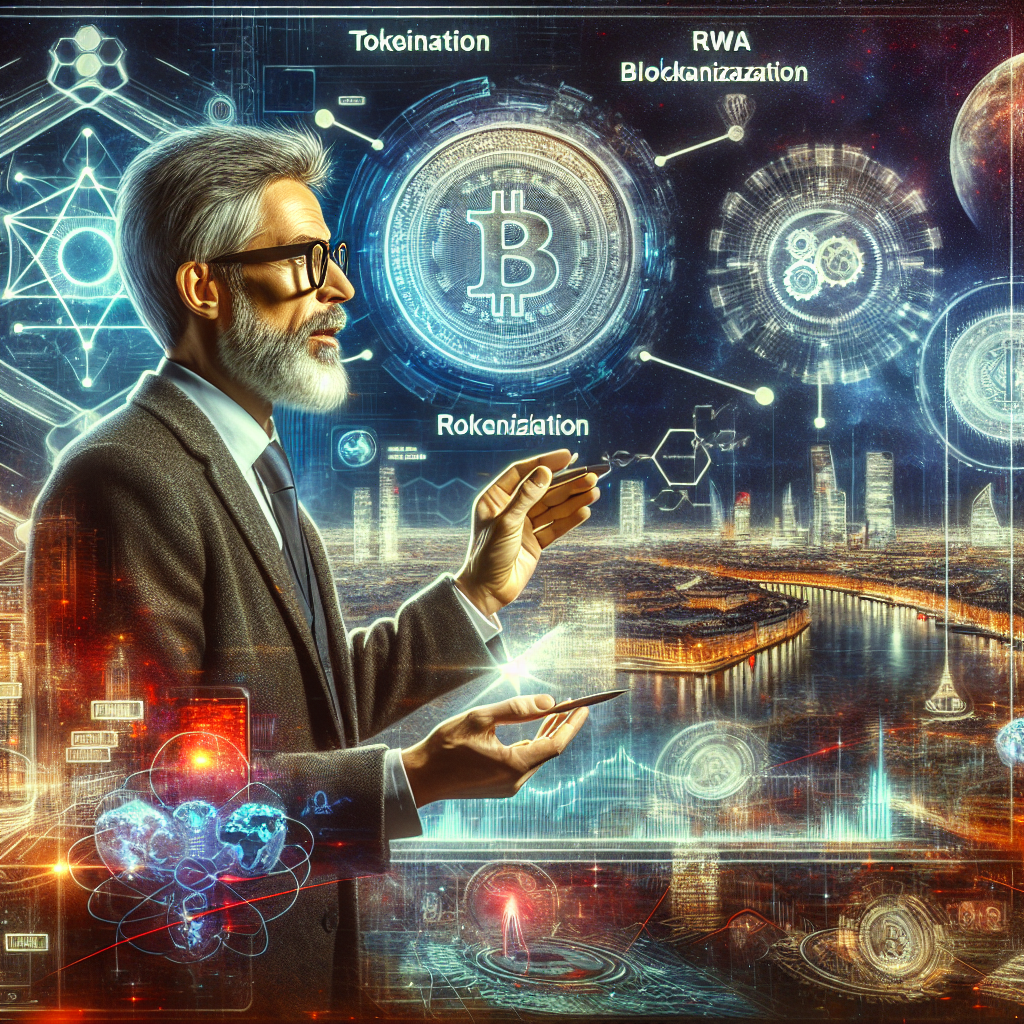RWA Tokenization Insights from Michael Sonnenshein at Paris Blockchain Week
The global financial landscape is currently experiencing a profound transformation driven by emerging technologies like blockchain. At the forefront of this evolution is the concept of Real-World Assets (RWA) tokenization, a trend that was vigorously discussed during the recent Paris Blockchain Week 2025, particularly in a panel featuring Michael Sonnenshein, the CEO of Grayscale Investments. This article delves into the insights and key discussions surrounding RWA tokenization that emerged from this esteemed event, shedding light on its significance and the opportunities it presents.
The Essence of RWA Tokenization
Real-World Asset Tokenization refers to the process of converting physical assets—such as real estate, commodities, or even art—into digital tokens on a blockchain. This innovation promises enhanced liquidity, greater access, and improved efficiency in asset trading, paving the way for a democratized financial ecosystem.
Michael Sonnenshein emphasized several critical points regarding RWA tokenization:
- Accessibility: With RWA tokenization, investors can gain fractional ownership of high-value assets, reducing the barriers to entry in investing.
- Liquidity: Tokens representing physical assets can be traded on secondary markets, providing much-needed liquidity to traditionally illiquid assets.
- Transparency: Blockchain technology offers an immutable ledger, promoting transparency and trust among investors.
Key Highlights from the Panel Discussion
During the panel, Sonnenshein shared insights about the current state of RWA tokenization and its future prospects. Here are some key highlights from the discussion:
1. The Current Landscape of RWA Tokenization
RWA tokenization is gaining momentum as businesses and investors recognize its potential. Sonnenshein noted that firms are increasingly exploring blockchain technology to tokenize assets, driven by the demand for innovative financial products. The current regulatory framework, however, remains a challenge. As jurisdictions work on comprehensive regulations, it is crucial for businesses to navigate this uncertainty prudently.
2. Regulatory Challenges and Considerations
One of the most pressing concerns in the realm of RWA tokenization is the regulatory landscape. The panelists discussed the importance of understanding local regulations and ensuring compliance. Sonnenshein remarked:
“Regulatory clarity is vital for the growth of RWA tokenization. We need to engage with regulators to foster an environment where innovation can thrive while maintaining investor protection.”
The dialogue around regulation is ongoing, and it is essential that industry participants advocate for balanced regulations that support innovation without compromising security.
3. Use Cases and Real-World Applications
Sonnenshein presented several compelling use cases for RWA tokenization, highlighting various sectors that could benefit from this technology:
- Real Estate: Tokenizing real estate allows for fractional ownership, lowering the capital required for investment.
- Art and Collectibles: Art investments can be made accessible to a broader audience through tokenization, facilitating ownership of high-value artworks.
- Commodities: Tokenizing commodities can simplify trading and ownership transfer, making the market more efficient.
These examples illustrate the versatility of RWA tokenization and its potential to overhaul traditional investment approaches.
The Role of Technology in Enabling RWA Tokenization
Technology remains at the core of RWA tokenization. As Sonnenshein articulated, the integration of smart contracts with blockchain can streamline processes and reduce transaction costs. This can lead to a more efficient market, where buyers and sellers can transact instantly and securely.
Furthermore, advancements in decentralized finance (DeFi) are propelling this trend. Owned assets can be leveraged within DeFi protocols, allowing token holders to earn yield or access additional financial services—essentially creating a vibrant ecosystem around tokenized assets.
The Future of RWA Tokenization
Looking forward, Sonnenshein expressed optimism about the future trajectory of RWA tokenization. As adoption increases and regulatory frameworks solidify, the potential for mainstream acceptance grows.
- Institutional Adoption: Major institutions are beginning to explore RWA tokenization for asset management, creating a significant demand for tokenized assets.
- Enhanced Interoperability: As different blockchain networks mature, there is a growing need for interoperability solutions that will allow seamless transactions across platforms.
- Global Expansion: The movement towards tokenization is global, with various markets witnessing innovations and creativity in solutions that meet their local demands.
Conclusion
The discussions surrounding RWA tokenization at the Paris Blockchain Week highlighted its potential to reshape traditional investing. Michael Sonnenshein’s insights provide a glimpse into a future where assets are not only more accessible and liquid but also fundamentally transformed by the power of blockchain technology.
As the dialogue continues around regulations and technology, it is imperative for stakeholders—including investors, businesses, and regulators—to collaborate. By embracing RWA tokenization, we can unlock a world of opportunities that foster innovation and democratize finance.
In summary, as we stand on the precipice of this financial revolution, the insights shared at Paris Blockchain Week serve as a clarion call for action. RWA tokenization is not just a trend; it is a transformative force that is set to redefine asset ownership and investment strategies in the years to come. Engaging with this evolving landscape will be essential for anyone looking to stay ahead in the sphere of digital finance.




